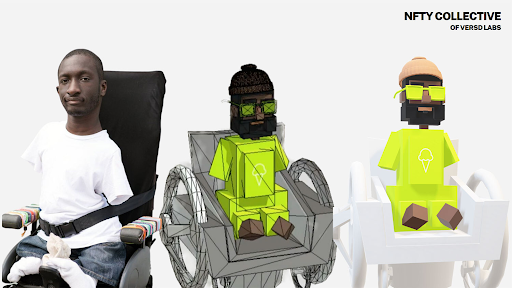As the metaverse grows, one big question keeps coming up: Is it built for everyone?
Right now, numerous individuals are enthusiastic about the potential of Web3, such as possessing digital assets or participating in virtual performances. However, if these areas are not created considering accessibility, many individuals, particularly those with disabilities, might be excluded.
Let us discuss what that implies and explore ways to resolve it.
First, what is the metaverse?
The metaverse is like a giant digital universe you can step into — not just watch on a screen. Using tools like virtual reality (VR) headsets or augmented reality (AR) glasses, you can attend virtual concerts, hang out with friends, go shopping, or even work, all through a digital version of yourself called an avatar.
What makes it different from just a video game or Zoom call is that it is shared, always running, and lets you take your identity and digital items (like clothes or currency) with you as you move from one place to another. It is like the internet, but you’re inside it instead of just looking at it.
Why Accessibility Matters
Imagine entering a virtual world where you cannot read the signs, cannot move around easily, or cannot hear what people are saying. That is the reality for many users with vision, hearing, mobility, or cognitive challenges.
The metaverse is not just for games,it can also be a powerful tool in education. It gives students, teachers, and school leaders new ways to interact and learn.
For students with disabilities, the metaverse can open up more learning opportunities. Instead of being limited to a physical classroom, they can join exciting, realistic virtual lessons from anywhere using VR headsets. This means a student at home and a teacher in another city can still meet in the same digital space and learn together.
This kind of tech makes learning more interactive and flexible, breaking down barriers like location, mobility issues, or special learning needs. It can also make history or science come to life. Imagine walking through ancient Egypt or exploring the solar system, all from your room.
So, what could schools in the metaverse look like soon? Think virtual classrooms, AR lessons, and learning without limits, where every student has a seat, no matter where they are or what they need.
In real life, we build ramps, add captions to videos, and offer braille. In the metaverse, we need to do the same, just in a digital way.
Easy Ways to Make the Metaverse More Inclusive
Here are some simple strategies developers and designers can use to make sure everyone can enjoy these new spaces:
Let People Choose How They Interact
Not everyone uses a mouse or a headset. Some people need voice commands, text controls, or motion sensors. Giving users different ways to interact makes the space easier for all.
Adjust the Experience to Fit Each User
Let people change things like sound levels, brightness, or screen contrast. Some people get overwhelmed easily, so being able to tweak these things can really help.
Make It Easy to Move Around
Not everyone can “walk” through a virtual world. Add simple maps, signs, and even “teleport” buttons to help users get where they need to go without frustration.
Offer Different Ways to Communicate
Some people prefer voice chat, while others may need to type or use sign language. Give users choices so they can connect in whatever way works for them.
Let Avatars Represent Everyone
People should be able to create avatars that look and feel like them, including skin tone, body type, wheelchair use, and more. That helps everyone feel like they belong.
Work With People, Not Just for Them
If you are building for people with disabilities, the best thing to do is ask them what they need. Involving people with real-life experience helps create better solutions. It is not enough to guess, real feedback makes a real difference.
It also helps to create rules or guidelines so that everyone designing metaverse spaces follows the same best practices. Just like websites follow accessibility standards, Web3 should too.
Initiatives working in line with this are the NFTY collective. NFTY is creating avatars based on real people from around the world who have disabilities and are doing amazing things. Instead of offering only celebrity or cartoon-like avatars, NFTY is giving users the option to choose digital identities that look more like themselves.

Companies like Meta (Facebook’s parent company) and others are starting to take this seriously, but there is still a long way to go.
The Big Picture
Making the metaverse accessible is not just about helping a few people, it actually makes the experience better for everyone. Clearer navigation, more ways to connect, and easier controls make things smoother for all users, whether they have a disability or not.
If we get this right now, we can build a future where everyone can explore, play, work, and thrive in the digital world.

